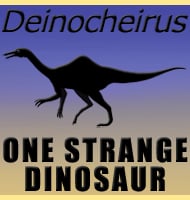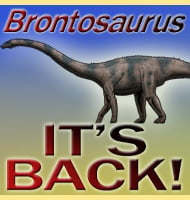In Depth
Ammosaurus has a long taxonomic relationship with Anchisaurus. The holotype fossils of Ammosaurus were originally described as a large species of Anchisaurus by Othniel Charles Marsh before they were erected as a distinct genus. Marsh then named a new species of Anchisaurus, A. solus, but then attributed that to Ammosaurus. Later palaeontologists found that the A. solus remains were just those of a juvenile of Ammosaurus major, and so A. solus became a synonym to the type species.
Around the end of the twentieth and beginning of the twenty-first centuries, fresh debate surrounded Ammosaurus with many prominent palaeontologists considering Ammosaurus to actually be synonymous with Anchisaurus. Others however pointed out subtle difference in the pelvis between Anchisaurus and Ammosaurus and continue to treat the two as separate genera, even though some have said that the differences are at a species level not a genus one. As such the validity of Ammosaurus as a distinct genus can vary greatly depending upon who you ask, but a safe statement is that the fossils from Ammosaurus and Anchisaurus, if not from the same genus of dinosaur, represent two that are very similar to one another in everything but size.
I terms of being a dinosaur, Ammosaurus was a prosauropod dinosaur, the form that was the precursor to the huge quadrupedal sauropods that would become commonplace towards the later stages of the Jurassic. Ammosaurus may have been quadrupedal, but their lighter frames mean that they would have better been able to rear up on their hind legs to reach high vegetation. Prosauropods like Ammosaurus were also recently descended from meat eating ancestors back in the Triassic, and it is possible but currently unknown for sure if Ammosaurus occasionally ate meat as well as plants. This is not to say that Ammosaurus was an active predator, it may have simply supplemented its herbivorous diet by scavenging meat off the carcasses of other animals. With some remains of Ammosaurus dating to the Bajocian stage, Ammosaurus is one of the few prosauropods known to have survived into the late Jurassic.
The wide geographical and temporal range of Ammosaurus means that it would have come into contact with many other early/mid Jurassic dinosaurs and other creatures. These included crocodyliforms like Protosuchus to predatory theropod dinosaurs like Dilophosaurus which may have been predators of Ammosaurus early on in the Jurassic.
Further Reading
- The prosauropod dinosaur Ammosaurus, the crocodile Postosuchus, and their bearing on the age of the Navajo Sandstone of Northeastern Arizona, P. M. galton - 1971. - Anchisaurus polyzelus (Hitchcock): the smallest known sauropod dinosaur and the evolution of gigantism among sauropodomorph dinosaurs, Adam M. Yates - 2004. - Description and evolutionary significance of the sauropodomorph dinosaurs from the early Jurassic (Hettangian) McCoy Brook Formation. Ph.D. dissertation. Halifax, Nova Scotia, T. J. Fedak - 2007. - A revision of the problematic sauropodomorph dinosaurs from Manchester, Connecticut and the status of Anchisaurus Marsh, Adam M. Yates - 2010.









